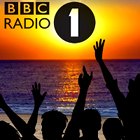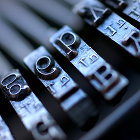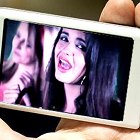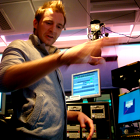Station imaging benchmarks beyond a logo melody… what are they? What makes a promo stand out? How does the future of radio look like, and what does it mean for imaging producers?
Station sound designer Matt Fisher talked about this at DeRadioDag (TheRadioDay) in the Netherlands. He’s a senior producer at BBC Radio 1 and Urban spin-off BBC Radio 1Xtra, and confesses to be “obsessed with sounds. I love imaging, promos, jingles – anything that has to do with it!”
Young listeners counterbalance older presenters
High energy beats, hard hitting impacts and heavily processed voices – they make the sound of BBC Radio 1 larger than life and right in your face. “Our strategy is to really engage our audience as we’re a station for 15-24 year olds.” Listener voices can be heard in the station imaging. It has a reason: “Our presenters are not the youngest. The station sound can balance it and bring young voices on the air.”
 Local voices create nationwide familiarity
Local voices create nationwide familiarity
Listener testimonials and voxpops are being recorded all over the UK, including Scotland, Northern Ireland and Wales. According to Fisher, “it’s really important to have voices from everywhere and not to be a London-centered station. We broadcast from the capital so it’s very easy to get in the city bubble.” Another benefit is that “it is easier to sell something simply through listeners, instead of using a long explanation and a hard sell by the station voice”.
Custom DNA replaces logo melody
Most radio stations still use a logo melody as main identification point. Matt explains why BBC Radio 1 has another approach. “There are different ways to create a DNA for your station. Logos are really good and very strong. They also work for big brands like T-Mobile and Pentium, but we have been slowly moving away from that. We use a custom made FX package as the base of everything we do.”
 Young audience cares about content
Young audience cares about content
Fisher realizes that it was “quite a bold move”. After all, a musical logo is considered to be part of a station’s heritage. BBC Radio 1 decided to go for something new anyway, thinking of their 15-24 year target demo. “We asked ourselves if they care about it. For the multitasking Net Generation [book] it’s about content, and they quickly move on to the next thing. The heritage aspect is much more important for an older audience.”
Keep logo rhythm, avoid logo melody
The 4-note station logo is still being used now and then, but in a different way: “Our station voices often say Ra-di-o-1 in the same rhythm as the logo melody, without the logo being heard musically.” Matt likes the rhythmic sound of KISS 100: “Everything’s on beat; it’s KISS-for-a-fun-young-Lon-don. It sounds very sharp and I’m sure it connects well with the young audience.”
 Spanish rebranding as practical joke
Spanish rebranding as practical joke
For a remote broadcast from the party island Ibiza, Fisher and his colleagues rebranded the entire station… in Spanish. “A bloody nightmare to produce” but basically a really simple imaging concept with a massive audience impact. “People turn on the radio and think: WTF… what’s going on? Then they hear Chris Moyles and realize they do listen to the right station.” It created a lot of attention for BBC Radio 1.
One promo for two audiences
Matt says that writing the copy was a really fun part of the project. “In one of the promos we said: hi, I’m a Spanish voice over and I’m speaking Spanish and you can’t understand what I’m saying, but if I say Pete Tong and Andy Mack, you might understand that! It was a nice joke, and for the Spanish speaking part of the audience it must have been quite funny. It was all about taking Ibiza to our listeners in a whole new way.”
 Great copy makes great imaging
Great copy makes great imaging
Creative copywriting is what makes effective promos. BBC Radio 1 has a station sound department of 6 people. Each producer has a specific area of expertise. Matt: “One of our guys writes cool, dark stuff that we play on Zane Lowe’s show, which identifies with the cooler kind of listeners. Then you have people who write more cheesy stuff and have a bit more fun. Often we meet in the middle.”
Healthy resilience saves creative playtime
Marketing people have a tendency to stuff every detail into a promo. How does he handle things like that? “As a producer you have to have a certain degree of healty resilience to push back and say: we don’t really need this and this. Give yourself those 10 seconds at the beginning or the end of the promo for some creativity, to make something that stands out.”
 Short attention vs. long promos
Short attention vs. long promos
In general, station imaging has to be short. “Especially if you’re a music network; it needs to flow”, Fisher knows. He also enjoys creative freedom to produce elaborate promos if he wants to. It’s currently a matter of discussion. “We do research to see if our audience can handle 40-50 second promos. There’s evidence that radio listeners do have a short attention span. On the other hand we want to create long lasting content.”
Future radio = visual radio
The next level in radio imaging will be adding the visual component. BBC Radio 1 already offers all kinds of things aside of the linear audio stream; most of it being visual. “We’re thinking about constantly filming The Chris Moyles Show and put it on TV or on the web. We’ve been testing it and many people are coming in to watch, it’s unbelievable.”
 Wanted: multi talented producers
Wanted: multi talented producers
The following years might be very interesting and challenging for radio producers. BBC Radio 1 is thinking of ways to visualize radio promos. “The idea is to live in those digital spaces where the audience hangs out, like getting video clips to their mobile phones.” In pace with today’s multi tasking audience, creative directors need to be multi skilled – like knowing how to use video editing and visual FX software. “It could become a new standard.”
Visual radio, audio rules
How should radio present itself in this visual age? Matt imagines that BBC Radio 1 should bring “high-energy stuff, like music videos, but in an extremely truncated format”. However, in his opinion, video is an addition and should not overrule the radio content. “Audio is king. We don’t want to slip into a world where we turn into a TV station, where sound sometimes is a bit second rate.”
 About
About
Matt Fisher started his career in hospital radio, university stations and local broadcasters such as Luton FM (now Radio LaB) and BBC Three Counties Radio. He gained more experience at commercial station Chiltern FM (now Heart Dunstable). Then he moved to London and became a station sound producer and DJ at 104.9 Xfm, before landing his dream job at the #1 music station in the world, BBC Radio 1 (weekly reach: almost 12 million listeners).





Add Your Comment